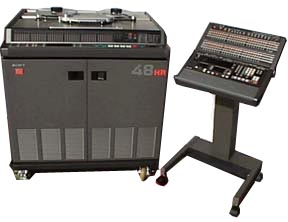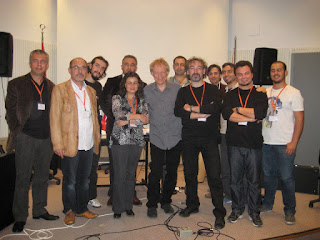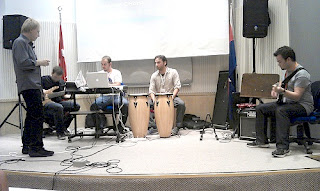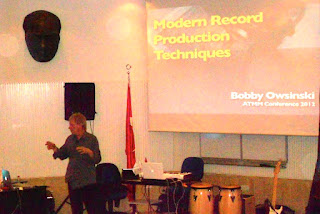 |
| Sony 3348HR Digital Tape Recorder and Remote |
Today you can find a 3348 for a couple of grand, but most owners would probably even pay you to take the big bulky hulk of metal off their hands. This one-time superb piece of audio technology became a boat anchor in almost no time, and unlike analog gear from that era, has virtually no chance of having new life breathed into it via the vintage market. It sounded great for it's time, but it's quality and function is not even in the ballpark of what we can buy today for a mere fraction of its original cost.
Pro Tools has gone on to completely change several areas of the audio business, from music to broadcast to post, and has become the de facto standard in most professional settings. That said, it's now owned by Avid, a company previously known for it's video editing software (the video equivalent of Pro Tools) than anything else. The problem is, Avid is in trouble.
Avid's trouble started when Apple introduced Final Cut, which was cheaper than anything that Avid had to offer and eventually just as capable. Soon the market was saturated between the two systems, with virtually no growth left, so Avid purchased Digidesign to get a piece of the still growing professional audio market. Eventually that topped out too, so the next move was to go into consumer audio and Avid acquired M-Audio among other similar companies. To many of Avid's stockholders, the company was on a roll as stock prices reached a high of over $28.
But the audio business, consumer and professional combined, is actually quite small compared to other businesses, and once again Avid was undermined by Apple and their Garageband software and less expensive versions of Logic. Suddenly the stock was in trouble and began to drop like a rock. Earlier this year, the company decided that it had enough of the consumer business and sold it off in order to stop the stock price hemorrhage. The existing professional audio and video market is pretty finite though, and competition is tough, which means that Avid's revenue has fallen from a high of $12+ this year to just half of that today as investors continue the rush to sell. They understand the stock price isn't coming back.
Which brings us back to the Sony 3348. You can own the market and almost overnight lose it if something newer, cheaper, and better (or two of the three) comes along. You can also lose it if the company is struggling financially and there's no money left for innovation. I think you can see where this is going - Avid is in trouble.
In recent months long time Avid employees have been jumping ship for other companies in the industry, seeing the writing on the wall. That's never a good sign. And the company didn't even show at the last AES convention in San Francisco a couple of weeks ago. Not a good sign either.
I don't think that Pro Tools would ever go away overnight the way the Sony 3348 did because the installed user base is so high (especially in post and broadcast), but I wouldn't be surprised if we see some changes in the company in the very near future. One thing I do know, there are a number of other companies out there circling like vultures preparing to pick up the pieces of Digidesign, whatever they may be.
Watch this story carefully over the next few months.
----------------------------------
You should follow me on Twitter for daily news and updates on production and the music business.
Don't forget to check out my Music 3.0 blog for tips and tricks on navigating social media and the new music business.




